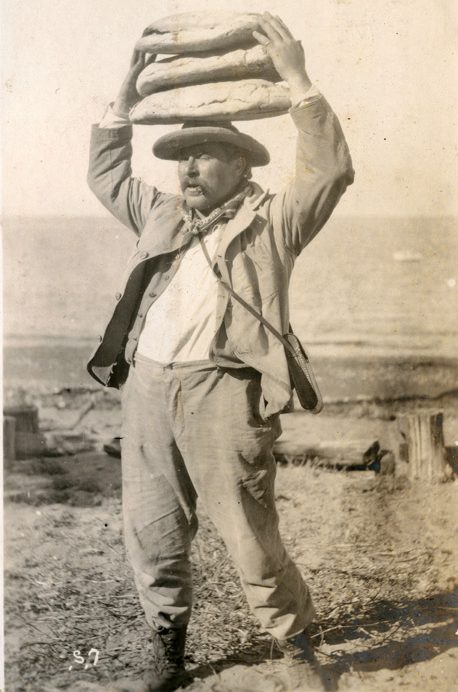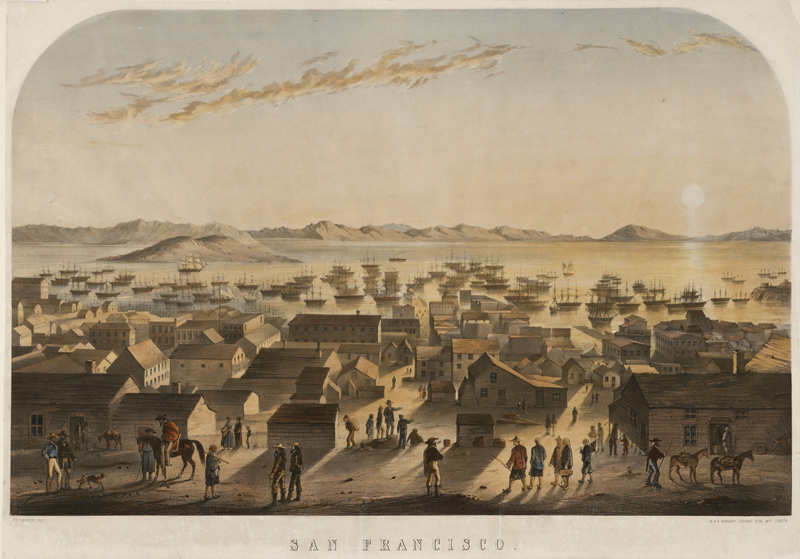In late 1848, when gold seekers flock to California from around the world, some European miners bring with them a thick paste of flour and water, or dough starter. When left to ferment and then mixed with dough, the paste becomes a leavening agent in making bread. Commercial yeast won’t become widely available in the U.S. until the Fleischmann brothers create a dried yeast cake in 1868.
The miners land in San Francisco and notice the bread they bake is tangier than bread from back home. Some claim the extra tartness is due to the wild yeasts found in San Francisco or in the city’s famous fog, and that bread made beyond a 50-mile radius of the city loses the characteristic sourness.
Word of this uniquely flavored bread quickly spreads, and several bakeries specializing in crusty sourdough loaves open in the city, beginning with Boudin Bakery in 1849, which gets its “Mother Dough” from a gold miner’s sourdough starter.
In the 1906 earthquake, Louise Boudin saves the family bakery’s “Mother Dough” from destruction.
San Francisco sourdough becomes so popular that in the 1890s, California miners, on their way to the Klondike Gold Rush, pack their fermented bread starter, cuddling it on cold Yukon nights to keep it from freezing. It earns California miners the nickname “sourdoughs.” Over the years, San Francisco sourdough becomes a favorite with tourists and is sold in great quantities on Fisherman’s Wharf and other tourist hot spots.
More than 100 years later, in the late 1960s there is a wheat surplus. To reduce the surplus, the United States Department of Agriculture wants to expand the availability of sourdough which although popular with consumers hasn’t been able to be replicated at bakeries in other parts of the country.
Two federal microbiologists working in a USDA lab in Albany are assigned the task of discovering where San Francisco sourdough gets its unique taste.
It takes three years for Leo Kline and Frank Sugihara to discover that it’s not the wild yeast but acid-producing lactobacillus found in the sourdough starter that gives the bread its sharp, tangy flavor. The microorganism is named Lactobacillus sanfranciscensis.
Once the “bug” is identified, in 1972 it becomes possible to export the bacteria to bakers anywhere, who can then make “authentic” San Francisco sourdough bread, thus increasing sales of bread and creating a bigger market for the glut of wheat.


